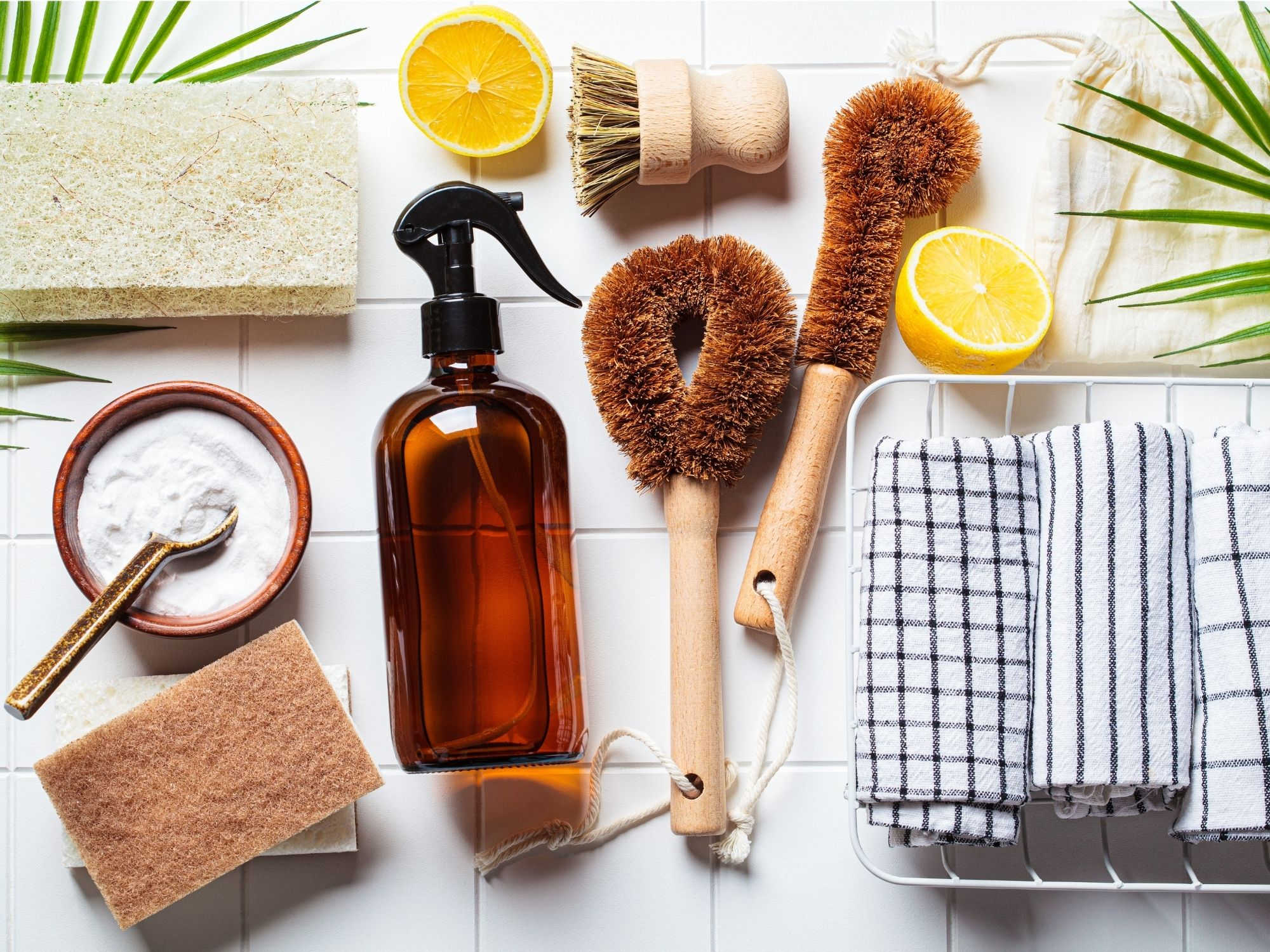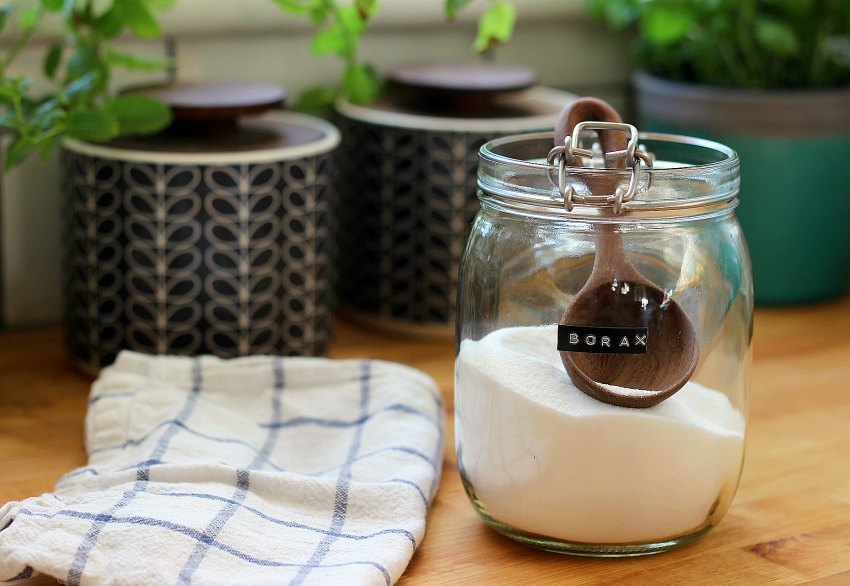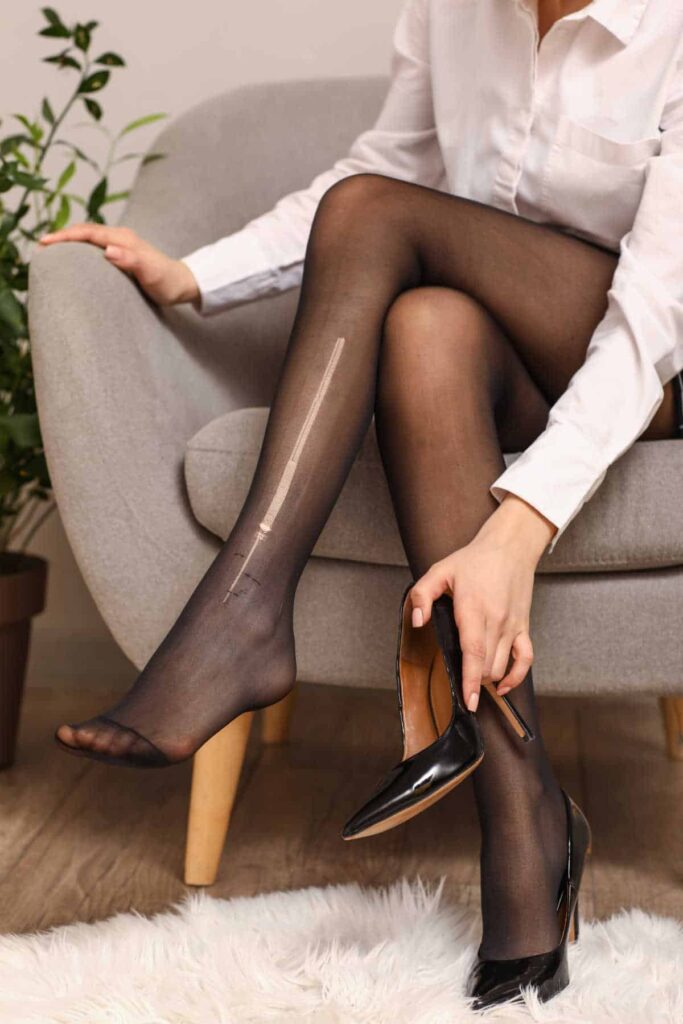Cleaning With Bicarbonate of Soda – Your Ultimate Guide
To support the running costs of Moral Fibres, this post may contain affiliate links. This means Moral Fibres may earn a small commission, at no extra cost to readers, on items purchased through these links.
Are you looking to green your cleaning routine? To help you get started, here’s everything you need to know about cleaning with bicarbonate of soda. From what you can clean with it, how to use it, how to store it, and much more.
Whilst you might associate bicarbonate of soda with baking, did you know that bicarbonate of soda is a must-have green cleaning essential? It’s true. Bicarbonate of soda is a great non-toxic all-rounder at cleaning nearly every nook and cranny of your home.
Before you get started with your new eco-cleaning BFF, here’s everything you could ever need to know (and more!) about using it:
Everything You Need to Know About Cleaning With Bicarbonate of Soda

Let’s roll up our sleeves and dig in!
What Is Bicarbonate of Soda?
First off, you might be wondering what bicarbonate of soda actually is.
Bicarbonate of soda is a mineral salt, first discovered in 1801. A food-safe ingredient, in the early 1800s, it was commonly used by fishermen as a preservative, to prevent freshly caught fish from going off.
Whilst fishermen got to keep bicarbonate of soda all to themselves for quite some time, eventually, some curious people started to explore other uses of this salt. In 1846 its usage became widespread in baking, before – thankfully for us – becoming well-known as a cleaning product a few years later.
Is It The Same As Baking Powder?
It’s a common misunderstanding, but bicarbonate of soda is not the same as baking powder.
Bicarbonate of soda is a single ingredient salt. Whilst baking powder does contain some bicarbonate of soda, it also contains cream of tartar, plus cornflour or rice flour.
As baking powder is specifically mixed to aid with baking then it isn’t suitable to clean your home with. It has a very delicate composition which means it’s simply not up to any cleaning jobs. Find out more in my full explainer on why you can’t use baking powder to clean with.
What About Baking Soda?
Find green cleaning recipes online or in books, and you might see baking soda listed as a key ingredient. This can get confusing knowing what to use.
Whenever you see baking soda listed as an ingredient, then don’t worry. It’s just plain old bicarbonate of soda that they are referring to. This is because bicarbonate of soda is the same thing as baking soda.
Baking soda – and sometimes sodium bicarbonate – are terms commonly used in America. In the UK and in places like Australia and New Zealand, the terms bicarbonate of soda or bicarb are used.
Why Is Bicarbonate of Soda Good For Cleaning?
What makes bicarbonate of soda so good for cleaning all comes down to chemistry.
Don’t worry, I’ll save you from a full-on chemistry lesson here. All you need to know is that bicarbonate of soda is chemically a base.
Bases react with oils and fats and dissolve them. This means that bicarbonate of soda will tackle dirt, grease, oil, and fats around the home with ease.
What’s more, bicarbonate of soda can tackle bad smells by neutralising or reducing bad odours around your home. Your fridge, carpet, rug, shoes, and everywhere in between can all benefit from bicarbonate of soda’s amazing deodorising properties.
Is it wizardry? No, it’s chemistry again! How it works is that the bicarbonate of soda reacts with the acidic molecules responsible for bad odours, and neutralises them. It’s known as an acid-base reaction – in which neutralisation is almost always the outcome.
As bicarbonate of soda is also a salt, it has mild abrasive properties. This means it provides a gentle scrubbing action, without leaving any scratches behind.
All in all, it’s pretty impressive work from just one cardboard box!
What Can You Clean?

Bicarbonate of soda is a natural cleaning superhero. As such, it can be used in a variety of applications around your home:
- Add a scoop to your laundry to help keep whites white.
- To help deodorise stinky fridges, wardrobes or drawers simply add some bicarbonate of soda to a bowl. Place the bowl in the offending area, to help neutralise bad odours. For best effects, mix it every week, and replace the bicarbonate of soda every 3 months.
- To deodorise stinky shoes, carpets or rugs, simply sprinkle some bicarbonate of soda directly into the inside of your shoes, or onto your carpet or rug. Leave it to sit for around an hour, then vacuum up the powder.
- To deodorise food storage containers that have taken on a pungent smell, simply wipe them with a clean damp sponge sprinkled with bicarbonate of soda.
- Likewise, to clean greasy, dirty, or oily surfaces in your kitchen, again, take a wet cloth and sprinkle some bicarbonate of soda on it. You can then wipe down your worktop, sink, microwave, cooker hood, and even your utensils.
These are just some of the very many applications for bicarbonate of soda!
Is There Anything You Shouldn’t Clean?
Whilst bicarbonate of soda can be used to clean many items and surfaces around your home, there are a few places where you should use alternative products:
Glass
Whilst bicarbonate of soda is a mild abrasive, it can still scratch or damage glass or mirrors. Cornflour is an even milder abrasive, better suited for cleaning glass.
Aluminium
Using bicarbonate of soda to clean aluminium surfaces, such as aluminium pans, can cause the aluminium to oxidise. This means the surface may eventually turn brown, after repeated cleaning.
If you do accidentally use bicarbonate of soda on aluminium surfaces, rinse it off straight after cleaning to help avoid oxidisation.
Quartz, Marble, Granite or Other Natural Stone
Avoid using bicarbonate of soda on any natural stone surfaces, including quartz, marble, and granite. Over time, repeated bicarbonate of soda use can cause damage to the sealant, and eventually leave scratches on the stone.
Wood
Similar to stone, bicarbonate of soda can damage the finish or sealant on wood furniture. Repeated use will eventually cause a dull finish on your furniture.
Antique Silver
Cleaning your best antique silver with bicarbonate of soda isn’t recommended. This is because bicarbonate of soda can be too abrasive. As such, with repeated use, your silverware can eventually lose its patina and tarnish.
Gold Plated Utensils or Dishes
As gold is a very soft metal, bicarbonate of soda is too abrasive to clean these items. Prolonged use will scratch and ruin the finish of gold plating. Eventually, it will cause the plating to wear off, so should be avoided.
Can You Use Bicarbonate of Soda and Vinegar To Clean?
There is a lot of confusion around bicarbonate of soda and vinegar. You do see so many articles or suggestions online to mix the two when cleaning.
However, you should never mix bicarbonate of soda with vinegar to make a cleaning solution. This is because when you mix the two, they react to form water, carbon dioxide, and salt. In other words, you are cleaning with nothing more than weak salty water. There are many more effective ways to clean your home!
I think this misinformation shows that even with natural cleaning, we still need to understand just a little about the science behind the products we use in our homes, and why we use them. I’m making it my aim to clear up any misunderstandings to make green cleaning easy and effective for everyone!
If you want to know more, here is a full article on why you shouldn’t mix vinegar and bicarbonate of soda.
Is Bicarbonate of Soda Eco-Friendly?

Bicarbonate of soda is made from soda ash. To produce soda ash, the naturally occurring minerals nahcolite and trona are mined from the ground, and these are then refined into soda ash.
As well as bicarbonate of soda, soda ash is also used to make other products that we depend upon. This includes products such as food, pharmaceuticals, soap, detergents, glass, paper, and more.
Having to mine the raw materials does sound problematic. However, whilst trona and nahcolite are non-renewable resources, they are not fossil fuels. This means their usage does not emit greenhouse gases.
Most of the bicarbonate of soda that we find in the UK is mined in Turkey or Wyoming. Here vast reserves of naturally deposited trona are found. It’s also estimated we have thousands of years before the world’s supply of trona dries up.
Destructive opencast mining doesn’t tend to be used to extract bicarbonate of soda’s raw materials. Instead, water is injected into the ground. This then returns the saturated water to the surface, and the raw materials can be extracted by evaporating the water.
Can’t It Be Made Synthetically?
Soda Ash can be made synthetically, through a method called the Solvay Process.
You would think that making it synthetically would be more environmentally friendly than mining soda ash. However, in actual fact, it is a more costly and energy and water-intensive production process than mining.
The Solvay Process also requires limestone mined from quarries, so it does not eliminate the need for mining. It seems far better to extract trona directly from the source.
All products have an impact. However, given that soda ash is used ubiquitously in many products that we depend on then it will be extracted from the ground anyway.
Bicarbonate of soda is also so effective at cleaning our homes. As one box can replace a myriad of toxic cleaning products, I personally consider it eco-friendlier than any conventional cleaning product. Of course, do make your own judgment on this.
Where Can You Buy It?
Bicarbonate of soda can be bought in the baking aisle in any supermarket.
However, it’s far cheaper to give the plastic tubs in the supermarket a miss and head to your nearest hardware store. Here you should be able to pick up a cardboard box of bicarbonate of soda for cleaning with and still have change from £2.
Needing to buy bicarbonate of soda in larger quantities? Or don’t have a hardware shop near you? Then do look at my guide on where to buy bicarbonate of soda for cleaning.
Looking for more green cleaning inspiration? Try my ultimate guide to natural cleaning products to DIY, which contains recipes, information on raw ingredients, cleaning guides, and much more.
Found this post useful? Please consider buying me a virtual coffee to help support the site’s running costs.




